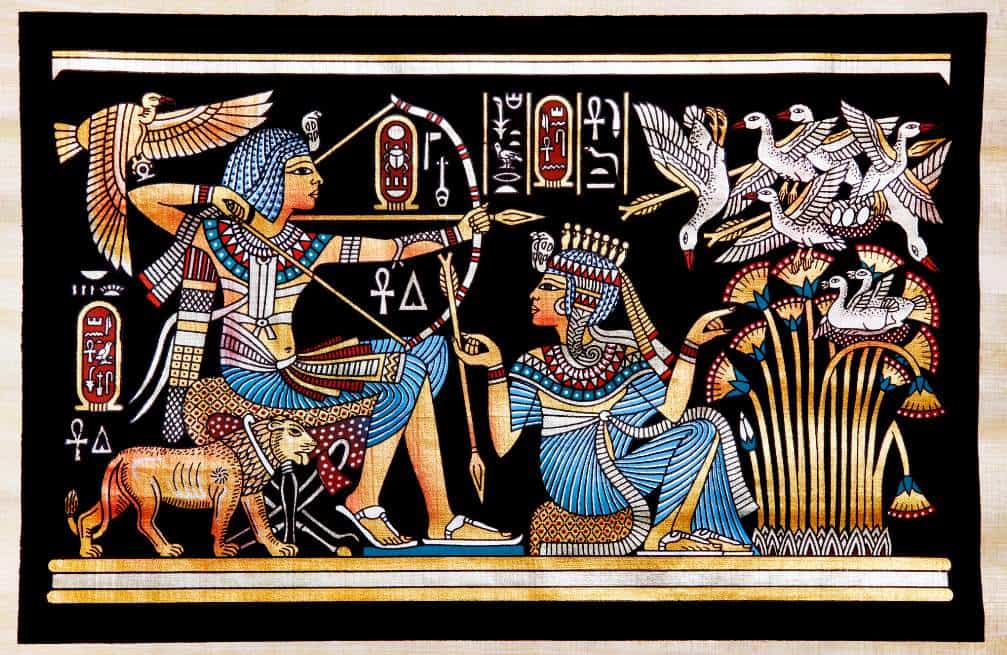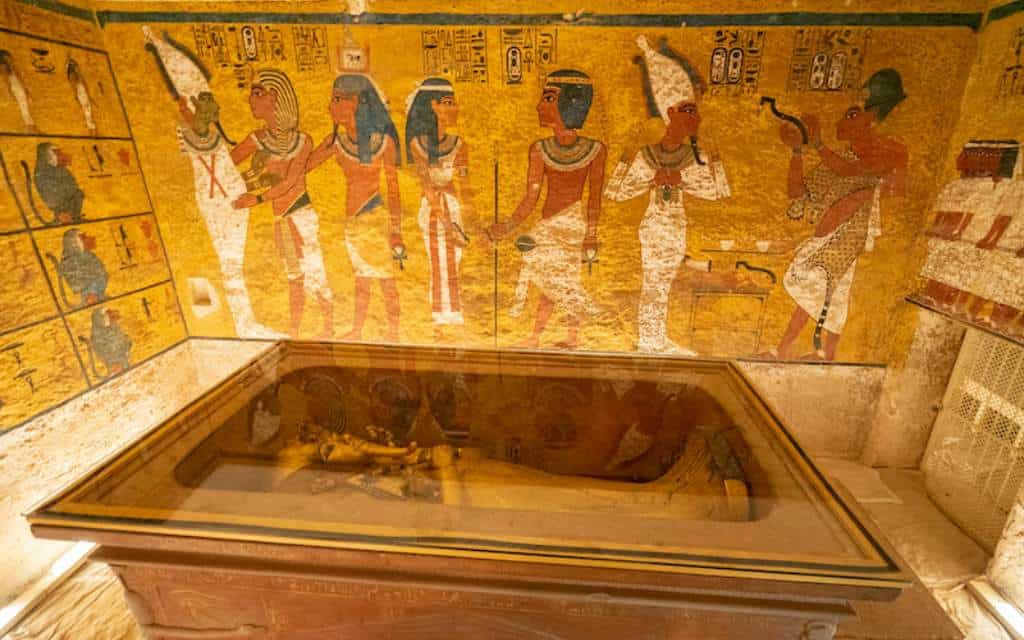Tutankhamun, often referred to as the “boy king,” assumed the throne of Egypt at the tender age of eight or nine during the 18th Dynasty, a pinnacle era of the New Kingdom. His reign, though brief—lasting approximately a decade—has captivated the modern world, largely due to the 1922 discovery of his remarkably intact tomb. Artifacts unearthed from his burial chamber have provided invaluable insights into the luxurious and ceremonial aspects of his life.
Daily Life of Tutankhamun, the Young Pharaoh
Tutankhamun is arguably the most famous pharaoh of ancient Egypt, despite having lived over 3,000 years ago. As a youthful monarch, he donned elegant white linen robes that extended to his knees and were secured with a decorative belt at the waist. His regal attire was complemented by intricate jewelry, including amulets shaped like falcons or scarabs, symbols of protection and divine power.
As part of his elite status, Tutankhamun followed the Egyptian tradition of wearing eye makeup and applying aromatic oils to perfume his body. His footwear was equally symbolic; his sandals featured depictions of his enemies, allowing him to symbolically trample them with every step he took.
Tutankhamun’s education was overseen by highly skilled court scribes. His studies encompassed a range of subjects, including astronomy, music, and geometry, equipping him with advanced knowledge for his era. When not engaged in scholarly pursuits, the young king likely wandered through the palace gardens, which were adorned with fig trees, date palms, and serene ornamental ponds.
Artifacts such as Tutankhamun’s throne and intricately decorated caskets depict intimate moments with Queen Ankhesenamun, his half-sister and wife. In one scene, the queen tenderly applies ointment to her husband, while in another, she presents him with flowers, illustrating their bond.
Discovering the Legacy of Tutankhamun
The discovery of Tutankhamun’s tomb in the Valley of the Kings has been instrumental in piecing together his daily life. British archaeologist Howard Carter’s groundbreaking excavation revealed an extraordinary collection of over 5,000 artifacts. These treasures included clothing, furniture, and ceremonial items, providing a vivid picture of the opulence and culture that surrounded the young pharaoh.
What Tutankhamun’s Tomb Reveals About His Life
The findings within Tutankhamun’s tomb also shed light on his activities and pastimes. Among the grave goods, archaeologists discovered an impressive arsenal that included 46 bows, 400 arrows, and boomerangs, which are linked to hunting practices. Additionally, shields, armor, and war chariots reflected his role in military affairs.
Beyond his martial equipment, the tomb contained game boards, particularly senet, a popular pastime in ancient Egypt. Musical instruments such as harps and lutes were also found, indicating their use during festivities and celebrations. The variety of food items buried with him—including fruits, wine, breads, wheat and barley cakes, ox backs, and lamb ribs—suggests the lavish feasts that might have been part of his royal lifestyle.
Source: Erika Montejo, National Geographic





